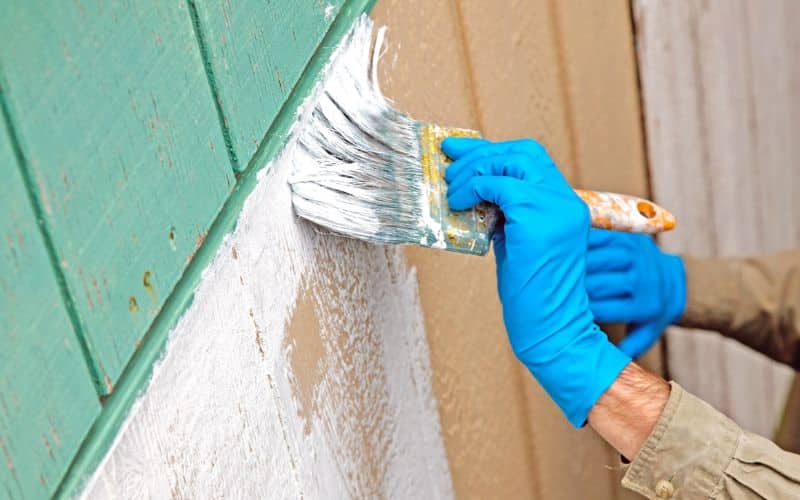What is paint primer and importance of primer paint when painting
Our expert team of skilled painters and decorators is here to bring new life to your home or business.
A fantastic way to give your living area a new look is to paint a room or furniture. However, using a decent brush and maintaining a steady hand alone won’t result in a high-quality and long-lasting finish. The preparation, which uses primer, is the key to a painting of professional quality. Our professional painting and decorating instructions from Coventry describe how to use primer, how much you need, and why you should always include it. Whether you are an expert painter or a DIY enthusiast, employing it should always be a crucial component of your work for the best possible results. A priming coat can extend the life of your colored surfaces and provide a better feeling for decorating. In the long term, applying paint is made simpler by this straightforward procedure, which is also less expensive than using additional paint materials. This article will detail primer, including what it is, why you always need it, and how to apply it to raw wood or other materials before painting.

How to use paint primer? An explanation of its goals and advantages
A primer is the initial step in the painting process and is effectively a particular coat. The benefit of primer is that it makes it easier for color to stick to surfaces, especially metal surfaces, where the primer is most needed. Without it, the paint may quickly chip, peel, or flake off over a short period. To distribute primer before coloring, you must first calculate the amount needed, which varies based on the surface area. The requirement for a primer persists whether you select a white one or one in another color. Making the error of painting with a primer can result in an incomplete and subpar-quality paint job. If you want your colors to last for years, it creates a smoother surface, better coverage, and a longer-lasting shade.
Why Primer Is Important Before Painting?
Before painting, using a primer solvent is an essential step in guaranteeing a high-quality and durable finish. A primer also helps to make a smooth, even surface to which the color will adhere by creating a base for the paint to attach. Paint will stick to the surface partially with a coat of primer and might even leave behind a stain. You must apply primer when dealing with porous surfaces like drywall or wood grain. Its capacity to enhance the stain’s adhesion to dry appropriately may be the reason for its utilization. Without primer, you will only need a small amount of paint to get the desired look. Priming will produce a homogeneous surface, but applying a glossy color over a porous surface may create an uneven finish. Use one coat for every two coats of paint. Always need a primer before coloring so it can make all the difference in producing a high-quality and polished product.
Importance of prime before painting, how much primer you need to use?
One cannot emphasize the importance of priming in attaining a professional appearance. Primer ensures the color clings effectively to the surface, especially when the cover is porous and applying it before painting. It helps the paint adhere and offers a foundation for a flawless painting job and good condition for less money than paint. Interior walls need to be primed before being stained, especially if they are in poor condition or are glossy or porous. Always use primer for the surface while painting walls. When painting, primer can reduce the number of applications required for a beautiful finish and longer-lasting paint job. If necessary, a tinted primer also aids in improving the color stain’s adhesion and achieving the project’s desired color. It could be required in some circumstances to use a separate primer, such as when coloring metals. Taking this step prior to painting is essential to guarantee a flawless application that will produce the best walls for the project.
Why are paint and primer necessary?
There are two kinds of primers: water based and oil based primer. Like when painting bare metal areas, such as exterior walls or metal walls and ceilings, primer is necessary because it offers many advantages, including a seamless paint application, longer durability, and a base coat for subsequent applications. Additionally, it links the stained surface and the fresh paint to stick, preventing flaking and chipping. Tinted primers will help to prepare the surface for a specific hue or shade; thus, picking the right one is essential for getting the intended effect. You need to spread primer to previously painted surfaces since it improves the adhesion of the new coat, ensures quality, and establishes the best outcome. Additionally, using it is less expensive, giving it a cost-effective solution for individuals on a tight budget to transform into lovely walls.
How to Use Primer Paint on Bare wood and metal Surfaces
Primer and paint are crucial steps when coloring a surface that one must not skip because they reduce the requirement for painting outside walls. To guarantee an equal application, start by priming various surfaces using a brush, roller, or sprayer. It is conducive when coloring a darker hue to tint primers to match the color of the topcoat. Before you’re painting, it is best to apply metal primer to walls because it will offer the proper protection and adherence. Before starting the project, it is necessary to use only one coat of primer. Although priming could seem like an extra step, the advantages of primer allow for considerably smoother paint application on drywall. Remember never you go wrong with priming.
Importance of primer on different painting projects and the drawbacks without primer
The appropriate product can make all the difference when it comes to decorating. Although primer alternatives might seem practical, it’s crucial to remember that color goods nearly always require a primer because it’s made to assist the paint in adhering to the surface and producing a smooth, long-lasting finish. The most crucial step in creating a cute wall is to follow the instructions provided online, in a book, or from a reliable source. It could stick smoothly with priming, leading to peeling, chipping, and uneven paint adhesion. It is still advised to prime before painting for the best results, despite claims that different primers for different areas are no longer necessary. Primer, often white and must be covered with paint on surfaces that are already painted, can reduce the number of required coats on previously painted surfaces and is easier in the long run.
Conclusion
In conclusion, a solid foundation is necessary for a faultless outcome. For a solid foundation, it’s imperative to adhere to professional advice regarding gorgeous coverage. Using paint products without a primer may result in a finish with a shorter lifespan and a lower-quality appearance. As a result, there is constant chipping, drying, and peeling off. Following the proper procedures helps the material stick to the wall more effectively and creates a surface in excellent enough condition for the stain to settle on. The benefits outweigh the additional work in the long run. For any dye work, a good priming finish will always produce the most remarkable results. One must prime the walls before coloring to ensure a final product that will last a long time and enhance the appearance of the wall.
Get In Touch
Book Your Appointment
Contact Us
- +44 7479 277887
- [email protected]
- Coventry, United Kingdom
- Monday to Saturday 8 AM to 5 PM
- Get Directions




